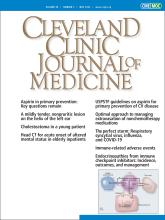Article Figures & Data
Tables
Grade Presentation Treatment 1 Minimal swelling, pain at infusion site Stop infusion
Remove cannula and tapes
Elevate2 Pain at infusion site, mild swelling, no skin-blanching, minimal redness, normal capillary refill time Stop infusion
Remove cannula and tapes
Elevate3 Pain at infusion site, swelling, skin-blanching with or without redness at the infusion site, sluggish capillary refill time, normal or decreased perfusion, hard to flush cannula Stop infusion
Leave cannula until reviewed by a doctor
Photograph injury if this will not delay treatment
Provider to commence irrigation procedure within 1 hour of extravasation by irrigating affected area using saline or appropriate antidote
Apply nonocclusive dressing as advised
Elevate limb
Consider plastic surgery team consult
Nursing staff to continue to observe the site hourly for the first 24 hours to monitor for adverse effects
Provider should review the site 1–2 hours after antidote to assess effectiveness, and reviewed again in 24 hours4 Pain at infusion site, marked swelling, skin-blanching, coolness, reduced capillary refill time, decreased perfusion, with or without arterial occlusion, with or without blistering Stop infusion
Leave cannula until reviewed by clinician
Photograph injury if this will not delay treatment
Commence irrigation procedure within 1 hour of extravasation by irrigating affected area using saline or appropriate antidote
Apply nonocclusive dressing as advised
Elevate limb
Refer to plastic surgery team
Nursing staff to continue to observe the site hourly for the first 24 hours to monitor for adverse effects
Review the site 1–2 hours after antidote to assess effectiveness, and review again in 24 hoursBased on information in references 5 and 6.
Antidote Mechanism and use Preparation Administration Sodium thiosulfate5–7 Neutralizes reactive species and reduces formation of hydroxyl radicals that can cause tissue injury
Used as first line for most vesicantsFrom 25% sodium thiosulfate solution: mix 1.6 mL with 8.4 mL sterile water for injection
From 10% sodium thiosulfate solution: mix 4 mL with 6 mL sterile water for injectionUse 2 mL of the prepared solution for each 1 mg of drug extravasated Hyaluronidase7 Hydrolyzes hyaluronic acid in connective tissue, possibly leading to dilution and diffusion of extravasated drug
Used as first line for most vesicantsTo obtain a 15-unit/mL concentration, mix 0.1 mL (of 150 units/mL) with 0.9 mL of 0.9% sodium chloride in 1-mL syringe
Usually dosed as 15 to 25 units intradermally over 5 injectionsIdeally administer within 1 hour of the event Phentolamine5,7 Alpha-adrenergic antagonist that promotes vasodilation and capillary blood flow
Used as preferred agent for vasopressors5 to 10 mg in 10 to 20 mL of 0.9% sodium chloride Administer within 12 to 13 hours of the injury Nitroglycerin topical5,7 Increases nitric oxide, promoting vasodilation
Used for vasopressors (alternative to phentolamine2% ointment: A half-inch of ointment equals 7.5 mg of nitroglycerin
5-mg/day transdermal patch1-inch strip applied to site of ischemia; can re-dose every 8 hours as necessary
1 patch dailyTerbutaline5,7 Alpha-adrenergic agonist that promotes vasodilation and capillary blood flow
Used for vasopressors (alternative to phentolamine)1 mg in 10 mL of 0.9% sodium chloride Inject locally across symptomatic sites Extravasated drug Classification: vesicant or irritant Immediate topical treatment Antidote Acyclovir2,5-7 Irritant or vesicant; alkaline agent (pH 11) Cooling Hyaluronidase Aminophylline2,4 Vesicant; alkaline agent (pH 8–10) Warming Hyaluronidase Amiodarone1,6,8 Vesicant; acidic agent (pH 3.5–4.5) Warming Hyaluronidase Amphotericin B4 Vesicant; acidic agent (pH 5–7) Cooling Hyaluronidase; for liposomal, consider flushout instead Ampicillin4 Vesicant; hyperosmolar agent Warming Hyaluronidase Calcium chloride 10%2,4 Vesicant; hyperosmolar agent Warming Early-onset: hyaluronidase
Delayed-onset: sodium thiosulfateDantrolene4 Vesicant; alkaline agent (pH 9.5–10.3) Warming Hyaluronidase Dextrose 10%–50%4 Vesicant; hyperosmolar agent Warming Hyaluronidase Dobutamine2,4 Vesicant; vasopressor Warming First-line: phentolamine
Second-line: terbutaline/topical nitroglycerinDopamine2,4 Vesicant; vasopressor Warming First-line: phentolamine
Second-line: terbutaline/topical nitroglycerinDoxycycline4 Vesicant; acidic agent (pH 1.8–3.3) Warming Hyaluronidase Epinephrine2,4 Vesicant; vasopressor Warming First-line: phentolamine
Second-line: terbutaline/topical nitroglycerinEsmolol4 Vesicant; acidic agent (pH 4.5–6.5) Warming (no literature support) Hyaluronidase Etomidate2,4 Irritant (rarely vesicant); hyperosmolar agent Warming (no literature support) Hyaluronidase Lorazepam4 Vesicant; hyperosmolar agent Warming (no literature support) Hyaluronidase Mannitol 20%4 Vesicant; hyperosmolar agent Warming Hyaluronidase Metronidazole4 Vesicant; acidic agent (pH 5.5) Warming (no literature support) Hyaluronidase Methylene blue4 Vesicant; vasopressor Warming (no literature support) First-line: topical nitroglycerin
Second-line: phentolamine or terbutalineNafcilllin4 Vesicant or irritant Warming Hyaluronidase Nitroglycerin2 Vesicant; hyperosmolar agent Warming or cooling Hyaluronidase Norepinephrine2,4 Vesicant; vasopressor Warming First-line: phentolamine
Second-line: terbutaline/topical nitroglycerinParenteral nutrition2,4 Vesicant; hyperosmolar agent Warming Hyaluronidase, nitroglycerin Pentobarbital4 Vesicant; alkaline agent (pH 9–10.5) Warming Hyaluronidase Phenobarbital2,4 Vesicant; hyperosmolar agent Warming (no literature support) Hyaluronidase Phenylephrine2,4 Vesicant; vasopressor Warming First-line: phentolamine
Second-line: topical nitroglycerinPhenytoin and fosphenytoin2,4 Vesicant; alkaline agent (pH 10–12) Warming Hyaluronidase or nitroglycerin Potassium chloride2,4 Irritant; hyperosmolar agent Warming Hyaluronidase Potassium phosphate6 Irritant; hyperosmolar agent Cooling Hyaluronidase Sodium bicarbonate 8.4%2,4 Vesicant; hyperosmolar agent Warming Hyaluronidase Sodium chloride (> 3%)2,4 Vesicant; hyperosmolar agent Warming Hyaluronidase Sodium phosphate4 Vesicant; hyperosmolar agent Warming Hyaluronidase Penicillin4 Vesicant Warming (no literature support) Hyaluronidase Valproate4 Vesicant Cooling Hyaluronidase with washout Vancomycin4 Irritant or vesicant; acidic agent Warming (no literature support) Hyaluronidase Vasopressin4 Vesicant; vasopressor Warming First-line: topical nitroglycerin
Second-line: phentolamine or terbutaline






